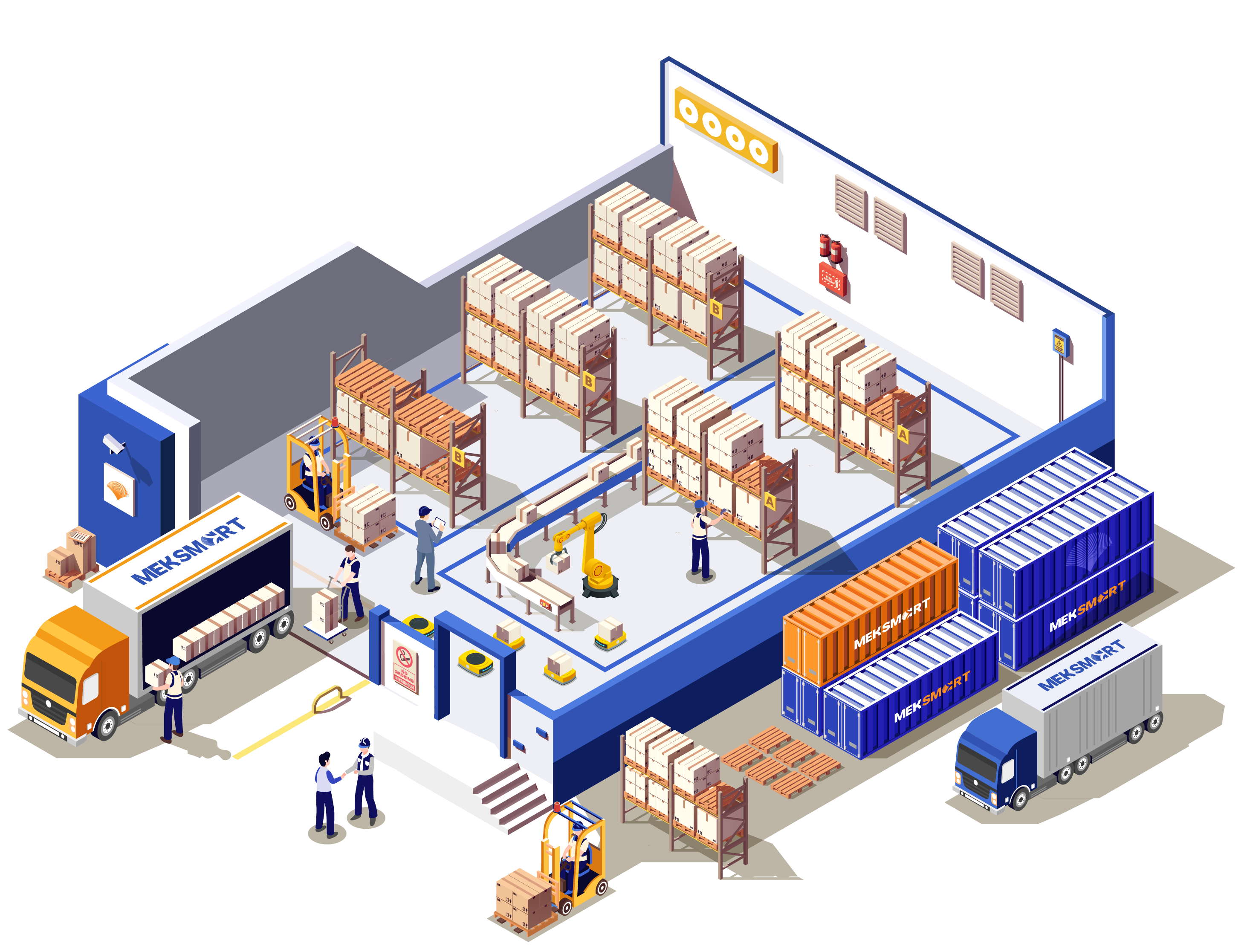MEKSMART
GENERAL NEWS
Author: TIÊN HUỲNH
Update: 25/11/2022
WHAT IS A SMART WAREHOUSE? ADVANTAGES AND DISADVANTAGES
Currently, smart warehouses are gradually showing their attraction as more and more businesses apply this model. So what is a smart warehouse? And how this model has advantages and disadvantages compared to the traditional way. Find out right in the following content.

What is a smart warehouse?
A smart warehouse or smart warehouse can be understood as an area to store goods and materials, using technology or machines to perform warehouse operations. The smart warehouse can handle requests quickly compared to traditional models.
Warehouse operations such as receiving orders, counting goods, storing goods, and remembering goods are all done more accurately with smart warehouses.
Smart warehouse helps to almost completely automate processes and storage activities from suppliers to customers with negligible errors.
Smart warehouses can combine different automated technologies so that they can build a technological environment in which goods and warehouse requirements for receiving, sorting, identifying, sorting, and ultimately preparing for transportation are automated.
The application of technology helps warehouse staff to increase productivity as well as improve work quality and efficiency when the number of human errors is significantly limited.
Advantages of smart warehouses
Help optimize warehouse space by up to 50%, operation efficiency by 70%
Compared to the traditional warehouse model, a smart warehouse can increase the ability to use the warehouse area by up to 50%. The robots will help pack and transport products into pallets accurately and neatly.
Complete automation of operations
Each commodity is admitted to the warehouse based on encrypted information including quantity, code, and date of manufacture. Warehouse managers can easily retrieve information on a computerized management system.
When importing/exporting goods, management only needs to enter the goods code, then the system will retrieve automatically and thanks to the automatic conveyor system, robots supply goods, etc.
Minimize risk
As you know, manual methods easily lead to man-made errors. The application of robots will help reduce these errors and help increase the efficiency of transporting goods.
Improve customer service
When warehouse operations are carried out correctly, goods will be shipped to consumers on time. From there, the customer experience will be significantly improved, increasing the percentage of loyal customers for businesses.
Disadvantages of smart warehouses
Investment capital
It can be said that to be able to automate with technology requires businesses to spend a large initial investment. You will probably be hesitant to buy a new system due to the cost. However, in the long term, smart warehouse systems will be sure for sustainable profits.
However, the ROI in the short term will not be clear. In addition to buying machines, there is also a need for proper training for employees who can use them properly.
Workforce
One of the other issues is looking at the number of workers because when using robots, many employees will be unemployed.
Adaptability is not high
Smart warehouses help automate and replace simple, time-consuming tasks. However, when the warehouse has a change in operating methods, it will require reprogramming of the system.
Epilogue
Despite some drawbacks, smart warehouses still show strength in the long run. This model helps automate tasks in the warehouse, increasing accuracy and optimizing execution time.
Businesses operating in the field of warehouses can consider applying technology with smart warehouses to increase competitiveness in the market.







